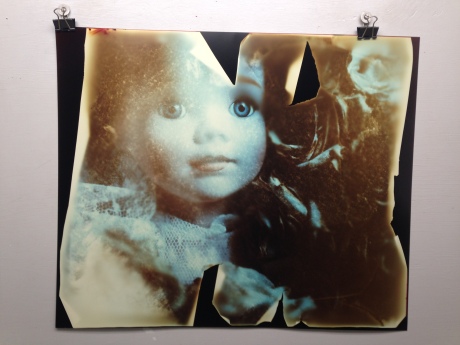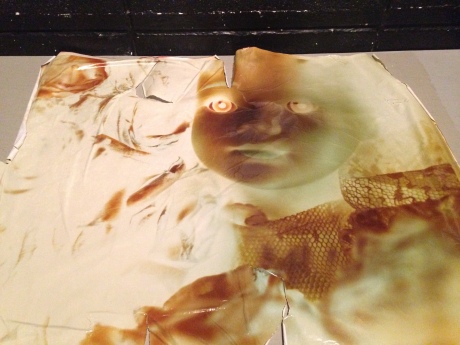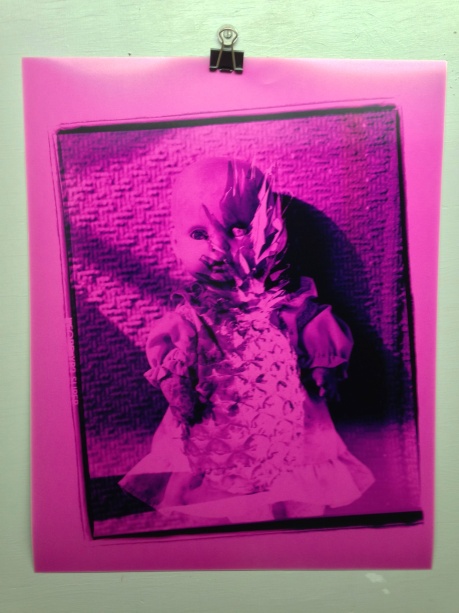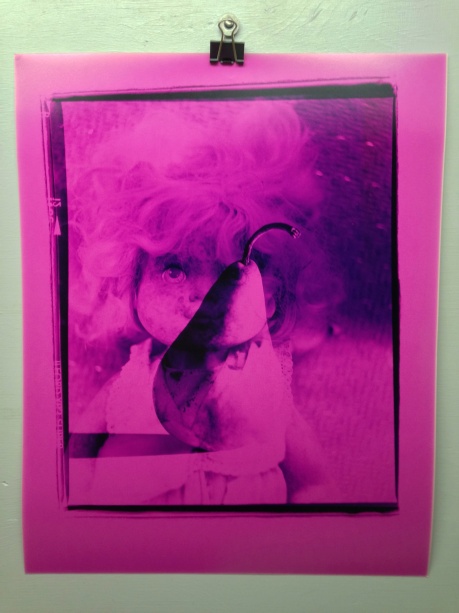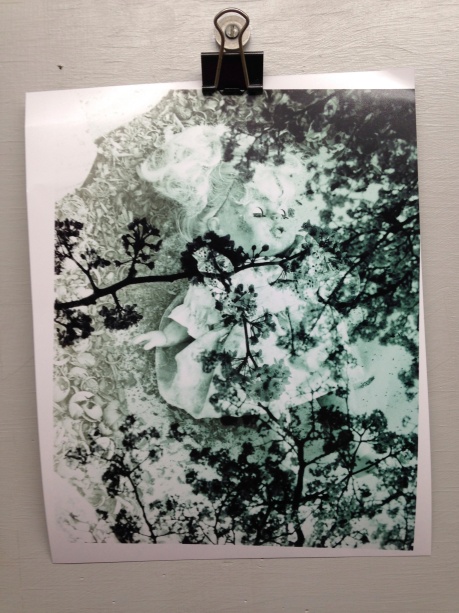In my last post I wrote about my experience last Summer in my favorite class, Custom Color Print. Here is another photograph I was able to create and print in the Color Darkroom. The first image shows the finished product, and the images below show the process. I started first with a Large Format 4×5 piece of Slide Film from a view camera, and a 20×24 piece of expired photo paper. In the color dark room, I exposed my slide unto the large paper and made a print. Taking a slide, which is a positive, and printing it directly unto the photo paper results in the image being printed as a negative. Once I had my 20×24 print of my negative image, I soaked it in water overnight. This process helped loosen the emulsion off the paper, which you can see in the second photo below. Unfortunately this was my first time peeling the emulsion, so some of it tore in places as it was being peeled. I then took my large paper negative and made a print of it, which gave me a beautiful and unexpected result. You can see in the finished product photo where the negative had torn in the process, by the black cutaways, and where the negative was peeling up during the exposure. I chose to not correct it, since I preferred the uniqueness of the image, and the experience I got doing it, over perfection.
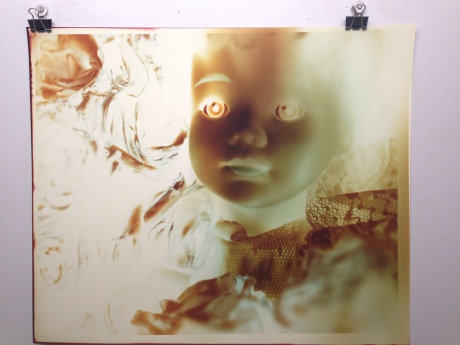
First Step: Slide Film printed on a 20×24 sheet of paper in the color darkroom. Since the slide is a positive film, it creates a “negative” on the paper.
